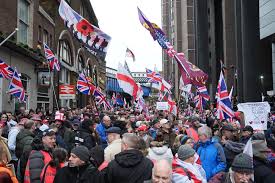Understanding the Recent London Protests

Introduction
Protests in London have become increasingly prominent over recent years, reflecting a spectrum of societal issues and the voice of the populace. Understanding these protests is crucial as they often signal underlying tensions in political, social, and economic contexts. With recent events drawing considerable attention, it becomes paramount to analyse their nature, motivations, and potential impacts on both local and national levels.
Overview of Recent Protests
In the past month, London has witnessed a series of protests, primarily centred around issues such as climate change, social justice, and political accountability. Demonstrations led by environmentalist groups have drawn thousands to the streets, demanding immediate action to combat the climate crisis. Additionally, movements advocating for minority rights have surged, amplifying calls for equality and justice within the community.
The largest of these gatherings took place on October 1, 2023, when demonstrators from various organisations converged in Trafalgar Square. Estimates suggest that over 20,000 individuals participated, making it one of the most significant protests in recent history. Speakers from diverse backgrounds addressed the crowd, calling for systemic change and immediate policy reform.
Government Response and Public Perception
The government has responded with both dialogue and discontent. While some officials have engaged with protest leaders to understand their demands, others have expressed criticism over the disruption caused to daily life and concerns regarding public safety. The police have been active in managing these large gatherings, often employing measures like containment to control crowds.
Public perception of the protests varies widely. While many recognise the right to protest as a vital aspect of democracy, some citizens express frustration over the resulting traffic disruptions and perceived inaction from lawmakers. Nevertheless, polls indicate that a significant portion of the populace supports the aims behind the protests, especially regarding climate action and social justice.
Conclusion
The recent protests in London highlight a crucial moment in the city’s socio-political landscape. As citizens unite to voice their concerns, the implications for governance and societal norms become increasingly significant. Observers and policymakers alike must pay attention to the emerging trends, as these protests are not merely temporary disturbances but pivotal moments that could shape the future of public policy and social cohesion in the UK. Moving forward, it is vital to foster dialogue and collaboration between protesters and authorities to address the underlying issues and build a more equitable society.
